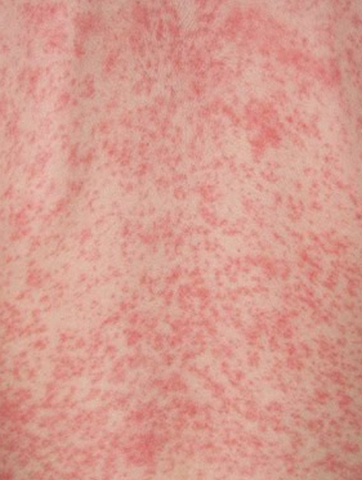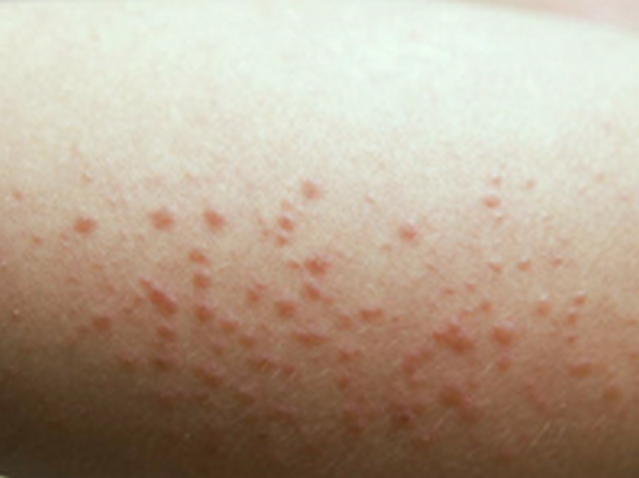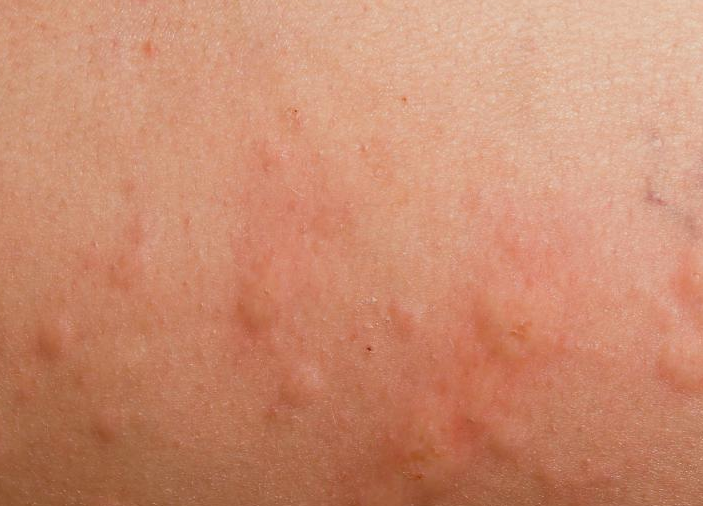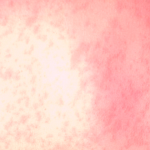A chlorine rash refers to a kind of skin rash which often occurs after an individual has contact with chlorine. Chlorine rash is also commonly known as swimming pool rash due to the fact that most cases of the skin condition are caused due to exposure to chlorine present in swimming pools. A chlorine rash generally develops a few hours after an affected individual has contact with chlorinated water and mostly results in itchiness. The rash tends to fade away in a few days
Chlorine is generally used in waters that are used by many people, and this is one of the main reasons for its presence in public swimming pools, in the waters of water parks and hot tubs. Chlorine has disinfectant properties which kill bacteria and other pathogens living in water of such public facilities.
Most individuals who get exposed to miniscule quantities of chlorine do not experience any severe symptoms, but there are some who can develop cases of chlorine rash even with mild exposure. Such individuals are usually found to be suffering from chlorine allergies. There are no specific ways to treat a chlorine rash. Patients can take self care and preventive measures to avoid excessive exposure to chlorine.
Symptoms and causes of chlorine rash
Acute contact: A chlorine rash is generally caused due exposure to chlorine compounds and its byproducts, which often result in allergic reactions and skin irritation. When such substances combine with organic matter like urine, sweat, etc. then it leads to the development of dichloramines, monochloramines, and trichloramine, which are strong irritants.
Some of the common symptoms of a chlorine rash are listed below:
- Irritation in the eyes, often accompanied by sensations of grittiness or scratches of the eyes
- The skin may be quite dry and itchy. The resultant case of chlorine rash may elicit peeling of the skin
- Chemical or allergic conjunctivitis may form along with reddening, excessive tearing, swollen eyelids and vision disturbances
- Coughing and sneezing
- Vomiting, pain in the abdomen, nausea and burning feelings in the gastrointestinal tract may be observed
- Short term problems in breathing and pain in the chest may also be experienced
Chronic exposure: People who experience prolonged contact with chlorine are at increased risk to developing allergic rhinitis, asthma, nasal irritation, hay fever and persistent bronchitis. The epithelium present in the airways becomes increasingly sensitive with long term chlorine exposure. Atopic patients who develop chlorine rash are at ten-time greater risk to such reactions. Children are more susceptible to formation of ear and respiratory tract infections.
People whose jobs involve exposure to chorine can experience chronic coughing, dermatitis, and wheezing in addition to cases of chlorine rash. Toxicity of the respiratory system and lung injuries are also possible. The accompanying sins tend to differ as per the quantity of compounds that such people come into contact with. Jobs which pose an increased risk to development of chlorine rash include activities involving chlorination and cleaning of swimming pools, cloth bleaching industries, water treatment plants, chlorine production units, and bleaching of pulp.
Some of the health complications which may accompany cases of chlorine rash and result due to elevated exposure to chlorine are as follows:
- RADS or reactive airways dysfunction syndrome: It is a disorder similar to asthma and may be caused due to a solitary incidence of extreme exposure to some irritants. It is identified with occurrence of symptoms like hardening of the bronchial walls, hypersensitive airways and minor persistent inflammation. Breathing problems and wheezing are also observed. The symptoms can only be slightly corrected.
- Allergic contact dermatitis: It normally develops as an allergic response of the immune system to allergens. In addition to formation of a chlorine rash, the affected person may experience reddish blotches on skin as well as blistering in a day or two after contact with chlorine
- RUDS or reactive upper-airways dysfunction syndrome: It is similar to chronic rhinitis and is caused due to acute contact with some irritants. The hyper-reaction is limited to the upper part of the respiratory tract. A case of chlorine rash and sinusitis is present, but breathing problems are generally non-existent.
Treatment of chlorine rash
- There is no antidote or cure for chlorine allergies which result in development of a chlorine rash. Hence, the best way is to take the necessary steps to avoid contact with chlorine.
- Ocular irritation can be alleviated by rinsing the eyes and surrounding areas. Dryness and reddening can be reduced with eye drops
- The skin regions affected by a chlorine rash may be soothed with a cold compress. Application of a hydrocortisone cream will also help
- Occupational and accidental breathing in of chlorine fumes require immediate self care measures. The contaminated clothing has to be discarded and patients need to venture into open atmosphere for fresh air. Development of a chlorine rash along with other skin anomalies, have to be checked by a doctor
- Application of Vaseline on skin areas prone to formation of chlorine rash before entering swimming pools can aid in protecting such areas from irritation. High risk individuals should completely avoid chlorinated water
- Showers before and after sessions in a swimming pool also help in washing away the causal irritants of a chlorine rash
Chlorine Rash Pictures






Well this is what my sister and I have and we love to swim. Any help here please?
Ive been dealing with this rash for almost one year n i have not found a solution